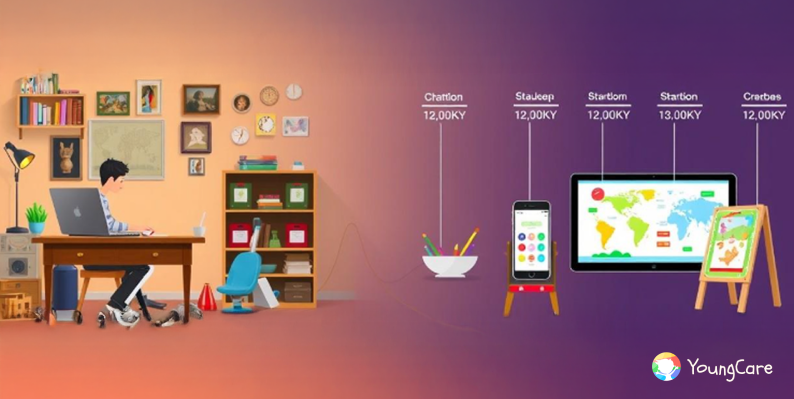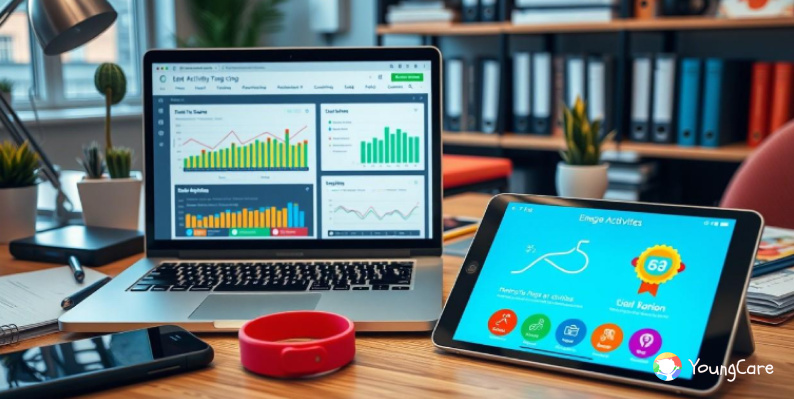Child activity tracking apps help parents protect their children in today’s tech-driven world. From GPS tracking to screen time management and cyberbullying alerts, these tools offer real-time support and peace of mind. While privacy concerns exist, responsible use alongside open communication ensures a balanced approach. As AI and wearables evolve, these apps continue to shape safer digital habits for kids—empowering parents to guide them with care and confidence.
Introduction Why Child Activity Tracking Matters

In today’s digital age, children are growing up with constant access to smartphones, tablets, and the internet—bringing both opportunities and risks. For parents, this creates new challenges in protecting their child’s online safety, managing screen time, and promoting healthy digital habits. Concerns like cyberbullying, exposure to inappropriate content, and online predators are more prevalent than ever. That’s why child activity tracking apps have become essential tools for modern parenting. These apps help parents monitor children’s screen time, track online activities, and ensure their kids’ physical and digital safety. They also encourage open communication about responsible technology use and digital well-being.
Background The Rise of Digital Parenting Tools

The idea of keeping track of a child’s activity is not new—parents have always tried to watch over and protect their kids. But digital activity tracking apps started becoming popular when smartphones and the internet became a big part of children’s lives. As kids began spending more time online, app developers created tools to help parents understand what their children were doing. At first, these apps only offered basic location tracking, but now they provide advanced features like monitoring app use, social media, web browsing, and sending real-time alerts if something seems wrong.
Core Features and Data How These Apps Work

Today’s top child activity tracking apps come with many helpful features to support parents and keep kids safe. These apps are designed to handle a variety of concerns. Here are some key features:
- GPS Location Tracking: See your child’s real-time location, movement history, and get alerts if they enter or leave safe or unsafe zones.
- App and Screen Time Monitoring: Check which apps your child is using and set time limits on device usage.
- Content Filtering and Blocking: Block harmful or inappropriate websites and apps based on age or custom rules.
- Social Media and Messaging Monitoring: Use AI to scan chats and messages for signs of danger, like bullying or harmful behavior.
- Parental Alerts and Reports: Get instant notifications if something concerning happens, like a change in location or risky content.
Why are these tools important?
- Bark, a popular monitoring app, has helped protect 7.5 million children and has detected 4 million cases of serious self-harm and 6.5 million incidents of bullying.
Apps like Findmykids have been downloaded over 50 million times, showing how much parents value digital safety tools.
Real-World Applications and Examples

Imagine a parent whose child walks to school alone. With an app like Findmykids, they can see the child’s route in real time and get alerts when the child reaches certain places. If the child spends too much time playing games during homework hours, apps like Net Nanny or Kaspersky Safe Kids let parents set screen time limits and block distracting apps. If there’s a risk of cyberbullying, apps like Bark can warn parents about harmful messages or social media posts, so they can take quick action. Many parents say these apps give them peace of mind, helping them support their child’s independence while still keeping an eye on their safety.
Challenges, Limitations, and Critical Perspectives

Even though child activity tracking apps have many benefits, they also come with some concerns and limitations:
- Privacy Issues: Too much monitoring can break trust and make children feel like they have no freedom.
- Smart Workarounds: Older kids may find ways to avoid the controls, like creating new accounts or deleting the app.
- False Sense of Safety: Relying only on technology can make parents forget the importance of talking openly with their children about online safety.
- Data Safety Risks: There are concerns about how app companies collect, use, and protect children’s personal data
Emerging Trends and the Future of Child Activity Tracking

This field is changing fast, with AI and machine learning now helping to understand behavior patterns and spot early warning signs. In the future, these apps might offer better insights into a child’s emotional health, connect with wearable devices for complete activity tracking, and create features that help parents and children make decisions together. As rules for using children’s data become stricter, app developers are working more on being clear, getting proper consent, and designing apps in an ethical way.
Conclusion
Child activity tracking apps are helpful tools for modern parents. But they work best when used along with trust, open talks, and teaching kids about online safety. Here are some useful tips for parents:
- Pick the app that fits your family’s needs.
- Talk to your child about staying safe online.
- Check and update app settings as your child grows.
- Keep learning about new online risks and safety tools.
In the end, technology should support both parents and kids, helping children use the internet safely and wisely.
Ready to take the next step in digital parenting? Explore the power of child activity tracking apps to create a safer, more balanced online experience for your kids. Whether you’re focused on screen time, online safety, or building trust, the right tool can make all the difference.
